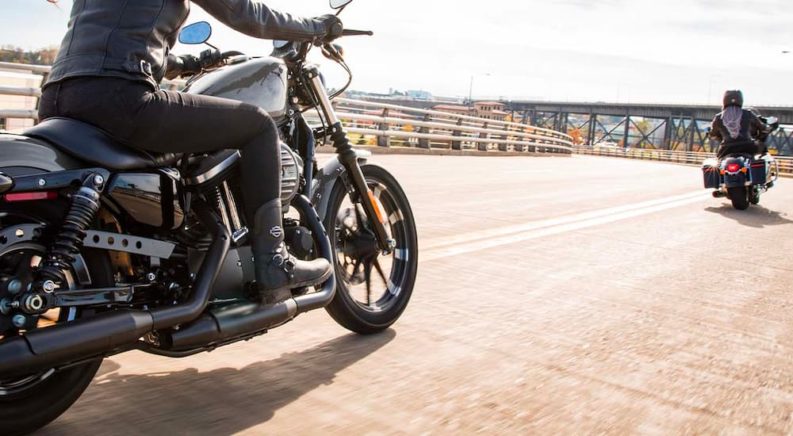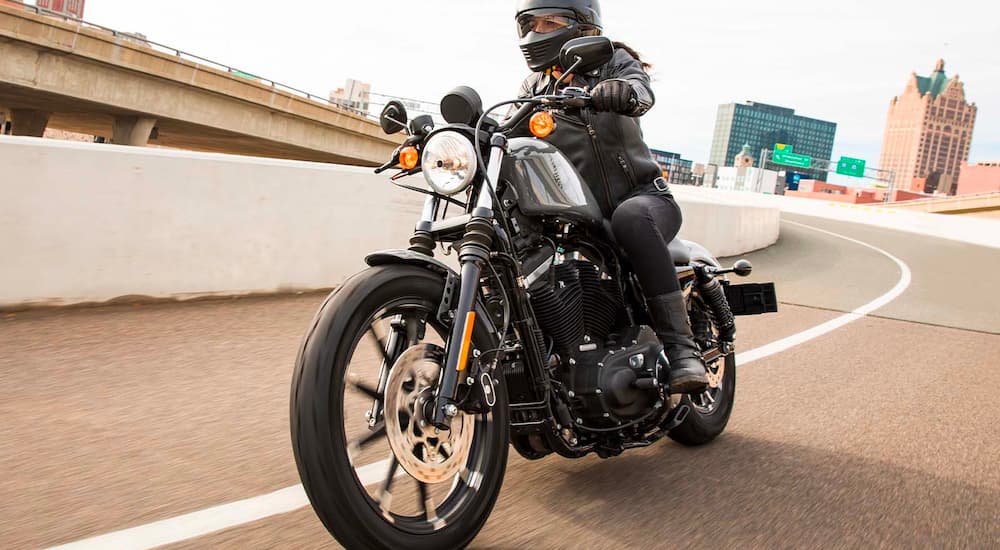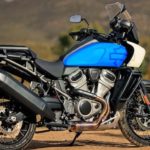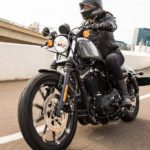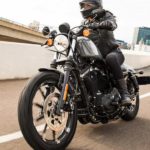Most success stories are paved with failures, but how we respond to those failures and learn from them helps shape our potential and our future. It’s a lesson we’ve all experienced and one that many of us teach our children, but it also has a broader impact. It’s affected individuals, businesses, and every aspect of humanity for centuries. We see this firsthand in Henry Ford’s multiple business failures before he struck gold with the Ford Motor Company. Likewise, we see it in the epic failure of the first Chevy, which didn’t stop Louis Chevrolet and William C. Durant from pursuing their dreams of building affordable, high-performance automobiles.
America’s most beloved motorcycle manufacturer isn’t immune to failure either, with Harley-Davidson experiencing many highs and lows since it built its first motorcycle prototype in 1903. One of Harley-Davidson’s greatest success stories is at the heart of the 2022 Harley-Davidson Iron 883: the revolutionary air-cooled Evo V-Twin engine. But what lesson did Harley-Davidson learn before developing an engine that would save the company from bankruptcy? It’s an epic tale of a motorcycle manufacturer pulling itself up by its bootstraps to become a pillar of the American motorcycle industry.
A Reputation in Question
For decades, Harley-Davidson was one of two major motorcycle manufacturers in America. But the flow of imported bikes after World War II led Harley-Davidson to apply for a 40% import tax with the US Tariff Commission in 1952. Harley-Davidson hoped the tariff would give them a stronghold in the market, but the plan backfired. Instead, Harley-Davidson was penalized for its restrictive practices. In baseball lingo, that was strike number one.
With Harley-Davidson’s reputation in question, demand for its bikes dwindled, leaving the company in a financial slump. American Machine and Foundry (AMF), a company that manufactured recreational items like bowling balls and tennis equipment, bought Harley-Davidson and made massive changes to its production and workforce. Although the goal was to get Harley-Davidson out of the “red,” the changes led to labor strikes and lower-quality bikes. This was strike number two.
As AMF cut costs and reduced labor, Harley-Davidson’s once-popular lineup saw a dramatic decline in quality. The Harley-Davidson name was tarnished, leaving a massive gap for Japan’s “Big Four” manufacturers (Honda, Yamaha, Suzuki, and Kawasaki) to fill. Higher-quality models from Japan flooded the market, leaving Harley-Davidson in a cloud of dust and desperate to regain its footing on American soil. Models like the 1976 Liberty Edition helped since it commemorated America’s bicentennial, but controversial models like the Confederate Edition quickly overshadowed it. This was strike number three.
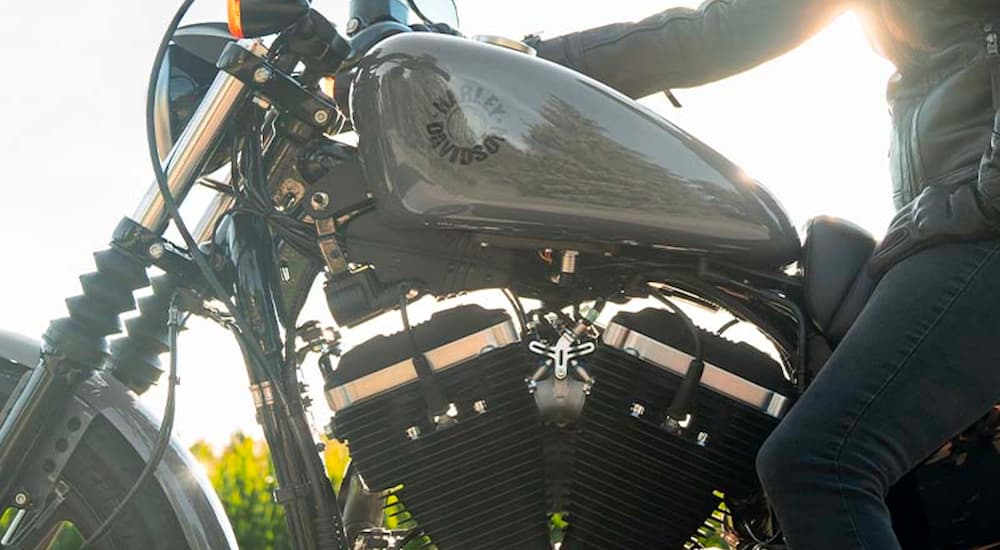
Hope on the Horizon
Harley-Davidson’s struggles continued into the early 1980s when AMF finally sold the company for $80 million. This time, the buy-out proved fruitful. Instead of cutting material costs and reducing labor or attempting to copy Japanese models, the new investors focused on rebuilding the Harley-Davidson brand without compromising its classic, retro style and by adding new technologies and higher-quality materials.
Behind the scenes, two other significant events impacted Harley-Davidson’s future. First, American businesses saw a substantial decline in sales throughout the early 1980s, but the impact on Harley-Davidson was more severe because of its tarnished reputation as an outlaw brand. Again, Harley-Davidson asked the US government for higher import taxes, and this time the US International Trade Commission increased tariffs on imported bikes over 700ccs from 4.4% to 49.4%. However, many Japanese manufacturers had facilities in America and expanded their production on American soil or had 699cc models already in their lineups, making the tariff ineffective.
Harley-Davidson couldn’t rely on the tariff to help it rebuild, which led to the second significant event that forever changed the company’s trajectory in the 1980s: the Evolution (Evo) V-Twin engine. With new investors, Harley-Davidson worked diligently to repair its reputation and started by modernizing its factories, establishing higher levels of quality control, and improving its processes. As a result, the defective parts and outdated engines that plagued the company decades prior were no longer a problem, especially with the 1984 debut of the Evo.
The Evo’s Impact
Honda, Kawasaki, Suzuki, and Yamaha were successful in the 1970s and 1980s because they continued to evolve their models to meet the demands of riders. Harley-Davidson accomplished this with the Evo in 1984, an aptly named engine inspired by the evolution of the company and its newfound promise to evolve with riders. What made the Evo so remarkable?
Until the Evo, Harley-Davidson’s engines were outdated and had many problems, with most of the company’s profits absorbed by warranty claims. Harley-Davidson knew it needed a reliable and capable engine that could be adapted to new models and evolving rider needs. The Evo addressed these issues, replacing the cast iron parts of the Shovelhead Big Twin engine with aluminum heads and cylinders. Why was this critical?
Harley-Davidson’s use of aluminum was a significant change because it automatically reduced most of the problems associated with its lineup. For example, the Shovelhead was notorious for its head gasket issues due to the engine’s cast iron components. Aluminum, an exceptional thermal conductor, mitigated this issue, dramatically improved the engine’s durability, and reduced its weight.
The Evo engine and Harley-Davidson’s improved processes, modernized factories, and enhanced quality control standards dramatically impacted the company. For example, these changes led to a sharp reduction in defective parts. As a result, Harley-Davidson slowly regained its footing among American riders but refused to rest on its laurels and turned to its Evo for inspiration.
Living Up to Its Name
Evo stands for “Evolution” and symbolizes Harley-Davidson’s critical shift in perspective in the 1980s when it realized its processes, builds, engines, and approach had to evolve with the times. The Evo gave Harley-Davidson another chance in the industry, saving the company from bankruptcy. This time, Harley-Davidson hit the ball out of the park.
After its debut in 1984, the Evo saw its first major update in 1986 when Harley-Davidson added it to the Sportster. The change was notable because of the uniquely configured valve train caused by the semi-unit construction of previous Sportsters. Harley-Davidson wasn’t willing to give up this construction, so it adapted and evolved.
Unlike many other motorcycles, the Sportster Evo relies on four independent gear-driven camshafts with one cam for every overhead valve. This layout aligns the cam lobes and creates a parallel pushrod configuration. The unique setup might have been born of necessity, but it delivers exceptional power and the ironic rumble forever associated with the Harley-Davidson name.
The End of an Era
The Evo’s unique setup and incredible power have been a winning combination for Harley-Davidson, with Evo Sportsters gaining a cult following. They have loads of character and style, are easy to customize, and deliver exceptional performance. As Rider Magazine puts it, “they have infinite character. Riding an Iron 883 in 2022 is similar to riding its 1957 counterpart, which is truly special.”
Harley-Davidson’s recent announcement that the Evo-powered Iron 883 will see its final year in 2022 has left Sportster and Evo fans at a loss for words. While Harley-Davidson likely has something up its sleeve to fill the gap left by these legendary models, riders still toying with the idea of getting in the saddle of the Iron 883 and enjoying the hearty rumble that saved Harley-Davidson from bankruptcy in the 1980s are running out of time. Soon, the only options left will be pre-owned models.

